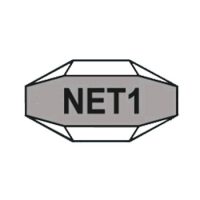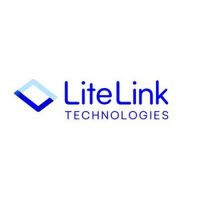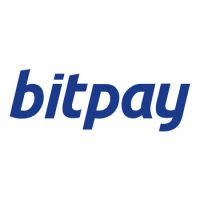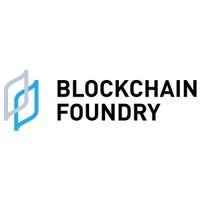Blockchain Press Releases
Generative AI Could Offer a US$60 Billion Opportunity to the Supply Chain, But Stakeholders Struggle to Define a Strong Revenue Model
Generative AI’s supply chain money tree cannot last forever and sooner rather than later they must look to build strong and differentiated revenue strategies to offset their ever-growing operational cost burden
LONDON, Aug. 2, 2023 /PRNewswire/ — Generative Artificial Intelligence (AI) is not a new technology, but its democratization was triggered by the emergence of powerful public APIs, notably ChatGPT. Since then, the consumer market has experienced tremendous traffic with high usage. In the wake of this demand, the supply chain has exploded with significant activity across each layer (R&D, hardware, foundation model, ML service tools, data services, applications, and ethics/regulation), trying to build access to commercial opportunities in the enterprise segment. According to a new report from global technology intelligence firm ABI Research, this market will rapidly expand by 2030 at a CAGR of 162%, offering nearly US$60 billion in revenue for supply chain stakeholders.
“Capturing the enterprise commercial opportunity is essential as stakeholders continue to struggle beneath a significant cost crisis driven by the consumer segment. Building data sets, deploying infrastructure, training, and running large language models like Claude, LLaMa, Titan, or GPT-3.5 has a sizeable cost burden that will be challenging to reduce,” explains Reece Hayden, Senior Analyst at ABI Research. “Popular public applications like ChatGPT cost at least US$500,000 per day to operate. That cost will only rise as usage increases. So far, stakeholders have relied on external funding to support free access through venture capital investment or internal subsidies. This cannot continue forever, and stakeholders must identify strategies to start generating revenue in the consumer and enterprise segments.”
Given their high customer acquisition cost, stakeholders are primarily stuck in ‘freemium revenue models that are largely unsustainable in the consumer segment. “These models are also mostly unfit for purpose in the enterprise market,” Hayden points out. “Although moving on from this model will be challenging, the good thing is that plenty of monetization opportunities have applicability across the supply chain.” Stakeholders can look to implement advertising models like those used by search engines, revenue share models which have proven successful in adjacent areas like cloud marketplaces or even look to productize open-sourced LLMs with closed-source enterprise functions. But it is vital that stakeholders carefully align their capabilities with a revenue model as some may not be fit for purpose.
The most successful revenue generation strategies over the foreseeable future will look to support enterprise adoption directly. Most enterprises lack Machine Learning (ML) skills/tools, operational expertise, and strategic legal/governance frameworks to support generative AI development and implementation effectively. For this reason, Hayden recommends, “Supply chain stakeholders should look to provide consultancy services or build low/no-code platforms that support development, deployment, fine-tuning, optimization, operational change management, and day two operations.” Business consultants like Bain, McKinsey, and BCG have joined system integrator incumbents through partnerships with foundation model owners like OpenAI. Moving forward, the enterprise service part of the supply chain could be worth more than US$15 billion by 2030.
Other factors are at play in this market, most notably the increasing focus on data privacy, which will trigger increasing interest in data service providers. Enforcement of copyright regulation for training data and enterprise demand for fine-tuning will create sustained interest in companies able to curate enterprise datasets or generate synthetic databases. “Recent fundraising rounds indicate more significant interest in ML data companies. For example, Mostly AI, a synthetic data generator, has just raised US$25 million, while Snorkel AI recently raised US$85 million at a valuation of US$1 billion, Hayden says.
“The supply chain has plenty of opportunities to offset their cost burden with revenue models, and some are already looking to do so,” concludes Hayden. “Beyond simply identifying new revenue models, stakeholders should look to build strong partnerships across the supply chain, build products/services that target B2B deployment and scale, and develop a leading position in responsible AI development.”
These findings are from ABI Research’s Generative AI: Identifying Technology Supply Side Revenue Opportunities application analysis report. This report is part of the company’s AI and Machine Learning research service, which includes research, data, and ABI Insights. Based on extensive primary interviews, Application Analysis reports present an in-depth analysis of key market trends and factors for a specific application, which could focus on an individual market or geography.
About ABI Research
ABI Research is a global technology intelligence firm delivering actionable research and strategic guidance to technology leaders, innovators, and decision makers around the world. Our research focuses on the transformative technologies that are dramatically reshaping industries, economies, and workforces today.
ABI Research是一家国际科技情报公司,为全球科技领袖、创新人士和决策者提供实用的市场研究和战略性指导。我们密切关注一切为各行各业、全球经济和劳动市场带来颠覆性变革的创新与技术。
For more information about ABI Research’s services, contact us at +1.516.624.2500 in the Americas, +44.203.326.0140 in Europe, +65.6592.0290 in Asia-Pacific, or visit www.abiresearch.com.
Contact Info:
Global
Deborah Petrara
Tel: +1.516.624.2558
[email protected]
Logo – https://mma.prnewswire.com/media/1471031/ABI_Research_Logo.jpg
![]() View original content:https://www.prnewswire.co.uk/news-releases/generative-ai-could-offer-a-us60-billion-opportunity-to-the-supply-chain-but-stakeholders-struggle-to-define-a-strong-revenue-model-301891210.html
View original content:https://www.prnewswire.co.uk/news-releases/generative-ai-could-offer-a-us60-billion-opportunity-to-the-supply-chain-but-stakeholders-struggle-to-define-a-strong-revenue-model-301891210.html

Blockchain Press Releases
Midnight Foundation Launches to Support Growth of Secure and Decentralized Blockchain Network

Led by former Input | Output (IO) and Parity Technologies executive Fahmi Syed, the Midnight Foundation will support the growth of Midnight’s rational privacy ecosystem and guide its transition to full decentralization.
TORONTO, May 13, 2025 /PRNewswire/ — Consensus 2025 — Today marks the official launch of the Midnight Foundation, an organization committed to supporting the growth of the Midnight blockchain ecosystem. Midnight is a platform enabling decentralized applications that deliver rational privacy – programmable data protection with selective disclosure. The Foundation’s core mission is to foster a thriving developer community, expand access to Midnight’s privacy-first technology, and guide the network’s evolution toward full decentralization.
Through a wide range of initiatives—including open-source tooling, education, and targeted funding—the Foundation will support builders developing real-world use cases using Midnight. Crucially, the Foundation will also play a leading role in Midnight’s path to autonomous governance. As the network matures, control over protocol upgrades, treasury allocation, and ecosystem development will transition to NIGHT token holders through on-chain voting. The Foundation will ensure this transition is secure, transparent, and community-driven.
These efforts will be key to empowering the Foundation to redefine what Web3 infrastructure can become: private, compliant, decentralized—and ready for real-world adoption.
The Midnight Foundation will be led by Fahmi Syed who has been appointed as President. A recognized leader in decentralized governance and digital innovation, Syed brings over two decades of experience in financial strategy, operational leadership, and decentralized technology to the role. Most recently, he supported the development of the Midnight project at IO. Prior to that, he was CFO at Parity Technologies, the team behind Polkadot and Kusama, where he led financial operations during a period of rapid ecosystem expansion.
Earlier in his career, Syed was Chief Operating Officer at FIFTHDELTA, Europe’s largest hedge fund launch of 2021. He also held senior leadership roles at Marshall Wace, where he contributed to the firm’s global growth to $45 billion in assets under management.
The core development of the Midnight network itself was led by Shielded Technologies, an engineering spinout from IO, the creators of innovations such as Cardano.
Shielded Technologies was founded to pioneer privacy-first, regulation-ready decentralized technologies, and continues to play an integral role in supporting Midnight’s technical innovation and ecosystem growth.
Commenting on his appointment, Syed said: “The Midnight Foundation has an extraordinary opportunity to shape the future of decentralized technology in a way that truly protects users’ rights and privacy. I’m honored to lead this mission at such a critical time. Working alongside Shielded Technologies and its visionary CEO, Eran Barak, we are committed to building a thriving, global ecosystem that brings Midnight’s transformative technology to life for developers, businesses, and communities everywhere.”
A new kind of blockchain network, Midnight is designed to overcome the limitations of traditional blockchains that expose all transaction data by default. It uses zero-knowledge cryptography and a cooperative tokenomics design to enable truly private, censorship-resistant, and regulation-ready applications.
Its public utility token, NIGHT, enables governance and rewards, while its shielded resource, DUST, powers transactions without exposing metadata or wallet details. Unlike typical blockchain fee models, DUST is renewable, non-transferable, and decays over time – a radical new model that makes the network sustainable, privacy-protecting, and secure from economic exploitation.
Moving forward, the Midnight Foundation will look to build a wide ecosystem of partners, builders and token holders, working together to realize the potential of the Midnight blockchain network. We invite you to join us on this journey.
+++END+++
Media Contact:
Georgia Hanias
Midnight Foundation
[email protected]
About Midnight Foundation
The Midnight Foundation is an organization dedicated to advancing the development, adoption, and real-world impact of the Midnight network, the privacy enhancing blockchain project developed by Shielded Technologies. Designed for confidential smart contracts, Midnight enables censorship-resistant yet compliant decentralized applications. It leverages zero-knowledge proofs and a cooperative tokenomics architecture- with NIGHT as the utility token and DUST as the shielded transaction resource- to deliver a powerful combination of privacy, security, and decentralization.
For more information, visit: https://midnight.foundation
About Shielded Technologies
Shielded Technologies is an emerging engineering company pioneering privacy-enhancing, decentralized technologies designed for real-world compatibility. A spinout from leading Web3 venture studio Input Output, Shielded brings deep cryptographic expertise as the core technology partner for the Midnight Network — a new blockchain that leverages advanced cryptographic proofs and a cooperative tokenomics design to protect data and metadata while ensuring auditability and compliance. In collaboration with the Midnight Foundation, Shielded is shaping a global ecosystem that upholds the fundamental freedoms of association, commerce, and expression.
For more information, visit: https://shielded.io

Photo – https://mma.prnewswire.com/media/2683712/Fahmi_Syed.jpg
Logo – https://mma.prnewswire.com/media/2683758/Midnight_Foundation_Logo.jpg
![]() View original content:https://www.prnewswire.co.uk/news-releases/midnight-foundation-launches-to-support-growth-of-secure-and-decentralized-blockchain-network-302451355.html
View original content:https://www.prnewswire.co.uk/news-releases/midnight-foundation-launches-to-support-growth-of-secure-and-decentralized-blockchain-network-302451355.html

Blockchain Press Releases
Independent Audit from Hacken Confirms MEXC’s Strong Security Standards

VICTORIA, Seychelles, May 13, 2025 /PRNewswire/ — As part of a systematic approach to ensuring the security, transparency and sustainability of its platform, MEXC, a leading global cryptocurrency exchange, regularly undergoes both technical and financial audits. One of the latest steps in this direction included the successful completion of a security audit by Hacken, a leading Web3 cybersecurity firm. The audit found no critical or high-risk vulnerabilities in the MEXC mobile application and confirmed that previously identified minor issues were fully addressed.
Key Takeaways:
- No critical or high-risk vulnerabilities were identified.
- All minor issues flagged during the audit were promptly resolved.
- The platform demonstrates adherence to robust security protocols and architecture.
The audit conducted under the comprehensive Hacken’s pentest methodology framework assessed all possible vulnerabilities of the MEXC app to attacks from malicious actors and exploitation. Hacken confirmed that MEXC’s existing security measures provide comprehensive protection against known threat vectors.
The audit also reviewed the platform’s operational architecture, emphasizing a balance between usability and security. Specifically, Hacken highlighted the MEXC app’s user-centric design and simplified navigation, which significantly improve the trading experience for both beginners and experienced traders. Special attention was given to the app’s infrastructure around trading execution, data handling, and fund transfer mechanisms.
MEXC has already addressed and resolved all low-risk vulnerabilities and risks that were flagged by the audit to strengthen the app’s resilience and improve the overall user security and trading experience. The prompt resolution highlights the exchange’s transparency towards its users and commitment to protecting its ecosystem from emerging threats.
Commenting on the audit, MEXC COO Tracy Jin stated:
“External, independent verification is an essential part of maintaining user trust and ensuring accountability. We thank Hacken for their work and continue to prioritize transparency and security, as we scale our services globally.”
Security and transparency remain key priorities for MEXC. In addition to successful technical audits, the exchange regularly confirms its financial stability through regular independently verified Proof of Reserves reports. This data is available to users and partners and meets industry standards for openness and control over user assets.
The full security audit report by Hacken is available at LINK.
About MEXC
Founded in 2018, MEXC is committed to being “Your Easiest Way to Crypto”. Serving over 40 million users across 170+ countries, MEXC is known for its broad selection of trending tokens, frequent airdrop opportunities, and low trading fees. Our user-friendly platform is designed to support both new traders and experienced investors, offering secure and efficient access to digital assets. MEXC prioritizes simplicity and innovation, making crypto trading more accessible and rewarding.
For more information, visit: MEXC Website|X|Telegram|How to Sign Up on MEXC
About Hacken
Hacken is a trusted blockchain security auditor on a mission to make Web3 a safer place.
With a team of 60+ certified engineers, it provides solutions covering all aspects of blockchain security, such as smart contract & protocol audits, bug bounties, and security assessments.
Hacken has been raising the bar for blockchain security, working with more than 1,500 Web3 projects since its inception in 2017.
For more information, visit: Hacken Website|X|LinkedIn

Photo – https://mma.prnewswire.com/media/2684757/1920X1080.jpg
Logo – https://mma.prnewswire.com/media/2668118/MEXC_new_Logo.jpg
![]() View original content:https://www.prnewswire.co.uk/news-releases/independent-audit-from-hacken-confirms-mexcs-strong-security-standards-302453714.html
View original content:https://www.prnewswire.co.uk/news-releases/independent-audit-from-hacken-confirms-mexcs-strong-security-standards-302453714.html

Blockchain Press Releases
Bullish partners with the Gibraltar Government and GFSC to pioneer world’s first crypto clearing regulation
GIBRALTAR, May 13, 2025 /PRNewswire/ — Bullish, one of the fastest-growing regulated virtual asset exchanges, today announced its partnership with the Gibraltar Government and the Gibraltar Financial Services Commission (GFSC) to develop the world’s first regulation for the clearing and settlement of derivative contracts settled in virtual assets. This innovation will enable virtual asset derivative contracts to be cleared and settled in virtual assets by a recognized clearing house for the first time. This groundbreaking initiative moves beyond the limitations of traditional fiat-based clearing and settlement infrastructure and marks a significant milestone in the evolution of virtual asset regulation.
Over the past six months, Bullish and the GFSC have collaborated and agreed to create a regulatory framework that seamlessly adapts traditional finance clearing regulations with the unique requirements and capabilities of the virtual asset market.
For example, under the proposed clearing framework, select virtual assets may be eligible as collateral and settlement currency. The selection criteria will follow the principles underpinning existing traditional clearing regulations. Additionally, the framework will expand the range of institutions authorized to hold collateral, enhancing market integrity and participation while mitigating key risks.
Setting the standard for a crypto clearing solution
Major virtual asset exchanges have been performing the clearing function without appropriate regulatory oversight, leading to failures impacting customers. The proposed regime introduces a regulated clearing house entity, separate and independent from the exchange and its participants, with improved transparency and capitalization to strengthen market infrastructure protection.
In a separate announcement, His Majesty’s Government of Gibraltar expressed its enthusiasm for the framework, which fosters trust, resilience, and integrity in virtual asset markets. Bullish warmly welcomes their announcement and is excited to work alongside the government and GFSC to bring this groundbreaking regulatory framework to fruition.
“There is currently no regulation that specifically addresses the clearing needs of the crypto industry. We aim to change that by introducing a framework that manages risk for virtual asset trading and is aligned with traditional market infrastructure standards,” said Tom Farley, Bullish Group CEO. “While Central Counterparties have become more robust in other asset classes, this initiative will bring that same robust risk management and regulatory oversight to the crypto clearing space that EMIR & Dodd-Frank brought to traditional derivatives markets. We welcome the announcement from the government of Gibraltar and look forward to introducing our joint proposal to the market.”
The Hon Nigel Feetham KC MP, Minister for Financial Services adds, “Gibraltar is renowned for pioneering clear regulation and embracing forward-looking technology, being the first jurisdiction globally to introduce legislation for firms using Distributed Ledger Technology. We are excited to deepen our relationship with Bullish and to introduce this unprecedented virtual asset clearing solution to the market.”
Bullish exchange poised to become first regulated virtual asset clearing house globally
In anticipation of the new framework, Bullish plans to introduce its Clearing Services offering alongside Options trading later this year. This initial launch will integrate a variety of clearing benefits into the market as Bullish moves toward establishing a standalone clearing house under the new regulatory framework. With licenses from the GFSC, the German Federal Financial Supervisory Authority (BaFin), and the Hong Kong Securities and Futures Commission (SFC), Bullish is well-positioned to set the standard for virtual asset clearing solutions.
“Our long-term goal is to establish a robust regulatory framework that not only meets the current needs of the virtual asset ecosystem but also anticipates future developments. This initiative underscores our commitment to operating a regulated, compliant exchange that supports institutional participation with an end-to-end clearing solution,” said Randi Abernethy, Head of Clearing and Group Risk at Bullish. “Several market participants have already voiced strong support for our business model because they recognize the value of regulated central clearing. We look forward to Bullish becoming the first operational regulated digital assets clearing house in the world.”
In advance of this, Bullish will form a clearing member working group to bring industry leaders together to share their expertise, establish the initial clearing network, and enhance the robustness of Bullish’s clearing ecosystem.
Media contact
Bullish
[email protected]
HM Government of Gibraltar
[email protected]
Gibraltar Financial Services Commission
[email protected]
About Bullish exchange
With a focus on developing products and services for the institutional digital assets sector, Bullish has rewired the traditional exchange to benefit asset holders, enable traders and increase market transparency. Supported by the Group’s well-capitalized treasury, Bullish’s digital asset spot and derivatives trading services utilize high-performance central limit order matching and proprietary market making technology to deliver deep liquidity and tight spreads within a compliant framework.
Launched in November 2021, the exchange is available in 50+ select jurisdictions in Asia Pacific, Europe, Africa, and Latin America. Bullish prioritizes compliance and safeguarding customer assets through robust security measures and regulatory oversight. The business is licensed by the Hong Kong Securities and Futures Commission, German Federal Financial Supervisory Authority, and the Gibraltar Financial Services Commission. For more information on the Bullish exchange, please visit bullish.com and follow LinkedIn and X.
Forward-Looking Statements
This press release may include “forward-looking statements” relating to future events or the Bullish Group’s future financial or operating performance, business strategy, and potential market opportunity. Such forward-looking statements are based upon estimates and assumptions that, while considered reasonable by the Bullish Group, are inherently uncertain and are subject to risks, uncertainties, and other factors which could cause actual results to differ materially from those expressed or implied by such forward-looking statements. You should not place undue reliance on any such forward-looking statements, which speak only as of the date they are made, and the Bullish Group undertakes no duty to update these forward-looking statements.
View original content:https://www.prnewswire.co.uk/news-releases/bullish-partners-with-the-gibraltar-government-and-gfsc-to-pioneer-worlds-first-crypto-clearing-regulation-302453487.html

-
Blockchain6 days ago
Colb Asset SA Raises $7.3 Million in Oversubscribed Round to Bring Pre-IPO Giants to Blockchain
-

 Blockchain Press Releases5 days ago
Blockchain Press Releases5 days agoHTX and Justin Sun Launch $6M Mars Program Special Edition, Offering One User a Historic Space Journey
-

 Blockchain4 days ago
Blockchain4 days agoBitget Blockchain4Youth sostiene l’innovazione del Web3 e dell’IA all’hackathon “Build with AI” di Google Developer Group
-

 Blockchain5 days ago
Blockchain5 days agoBlocks & Headlines: Today in Blockchain – May 9, 2025 | Robinhood, Solana, Tether, China, Women in Web3
-

 Blockchain6 days ago
Blockchain6 days agoBlocks & Headlines: Today in Blockchain – May 7, 2025 | Coinbase, Riot Games, Curve DAO, Litecoin, AR.IO
-

 Blockchain Press Releases4 days ago
Blockchain Press Releases4 days agoBybit Surpasses 70 Million Users, Reinforces Commitment to Transparency and Institutional Growth
-

 Blockchain Press Releases6 days ago
Blockchain Press Releases6 days agoGRVT Launches Biggest Ever Trading Competition for Retail Traders, Offering Up to 175,000 USDT in Prizes
-

 Blockchain Press Releases5 days ago
Blockchain Press Releases5 days agoMEXC Lists USD1, Accelerating Global Stablecoin Innovation with World Liberty Financial




























